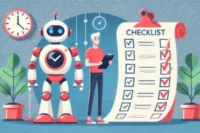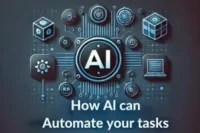Common AI Tool Challenges and How to Overcome Them for Better Results
Published: 01 Jan 2025
AI tools offer incredible potential, but implementing them effectively can be a huge challenge without understanding the obstacles you might face. AI is no longer just a buzzword; it’s becoming a game-changer in almost every industry. AI tools are shaping the future, from streamlining business operations to diagnosing diseases in healthcare and personalizing education. But here’s the catch: these tools come with their own set of challenges. Without addressing these issues, organizations risk falling short of achieving the results they’re aiming for.
Learning about the challenges of AI adoption is the first step to overcoming them. By understanding these hurdles, you can take proactive steps to ensure your tools deliver optimal performance. This guide will help you uncover common AI challenges and provide solutions so you can get the most out of your AI investments.
Ready to tackle these challenges head-on? Let’s dive in!
1. The Steep Learning Curve
AI tools can feel challenging to learn, especially for people who don’t have a technical background. It’s a common issue, but there are ways to make it easier.
Problem
AI tools often require technical knowledge that can be overwhelming for new users.
Example
For instance, learning how to use advanced machine learning frameworks like TensorFlow means you need to understand coding and algorithms—skills not everyone has.
| Why It’s a Challenge |
|---|
|
Start small with beginner-friendly, no-code AI tools like:
- Google AutoML: Makes machine learning simple.
- IBM Watson: Great for building AI models without coding experience.
Actionable Tip🌟
- Look for AI tools that come with:
- Beginner guides
- Video tutorials
- Active online communities for support
- Start with small projects to build confidence before moving to advanced tools.
2. Data Quality and Availability
AI systems rely heavily on data, and poor data quality can lead to unreliable or biased results. Here’s why this is such a big challenge.
Problem
AI systems need accurate, clean data to work properly. If the data is flawed, the results will be too.
Example
For instance, if you’re using an AI tool to recommend products, inaccurate sales data will lead to poor recommendations. This can damage the customer experience and hurt your business.
| Why It’s a Challenge |
|---|
|
Invest in data cleaning and management tools to ensure your data is high quality. Tools like:
- Trifacta: Helps clean and transform data quickly.
- Talend: Offers solutions for data integration and quality management.
Actionable Tip🌟
Use AI data pipelines that automatically clean, process, and validate data to save time and reduce errors. This can free up your team to focus on more valuable tasks.
3. Ethical Concerns and Bias in AI
AI tools can inherit biases from the data they are trained on, leading to ethical concerns and unfair outcomes. Let’s dive into why this is a serious issue.
Problem
AI systems can learn biases present in the data they are trained on, which leads to unfair or biased results.
Example
For instance, a biased hiring AI tool might unfairly prioritize certain demographic groups over others, resulting in discriminatory hiring practices.
| Why It’s a Challenge |
|---|
|
Regularly audit AI models for fairness and make sure to use diverse, unbiased data sets when training them. This helps reduce the risk of unfair outcomes.
Actionable Tip🌟
Use tools like AI Fairness 360 by IBM to analyze and correct bias in your AI models. This can help ensure your AI systems are more fair and transparent.
4. High Costs of Implementation
Developing and maintaining AI tools can be expensive, especially for small businesses. Let’s consider why this is a challenge and how to address it.
Problem
Creating and maintaining AI tools can be costly, especially when it comes to deep learning or custom AI models.
Example
For instance, custom AI development, especially in areas like deep learning, often requires significant investment in both specialized hardware and skilled talent.
| Why It’s a Challenge |
|---|
|
Leverage cloud-based AI services like AWS AI or Google Cloud AI. These platforms offer scalable, pay-as-you-go solutions, which allow you to pay only for what you use.
Actionable Tip🌟
Start with SaaS (Software as a Service) AI tools that offer flexibility and lower upfront costs. This allows you to experiment with AI tools without committing to expensive infrastructure.
5. Security and Privacy Risks
AI tools handling sensitive data can be vulnerable to security breaches and misuse. Here’s why this is a major concern.
Problem
AI tools that process sensitive data can be targeted by cybercriminals if proper security measures aren’t in place.
Example
For example, AI-based facial recognition or personal assistant apps can be exploited if there are weaknesses in their security protocols, leading to unauthorized access.
| Why It’s a Challenge |
|---|
|
Ensure that all data is encrypted and adhere to best practices like two-factor authentication to add an extra layer of protection.
Actionable Tip🌟
Adopt a security-first mindset by integrating end-to-end encryption and regularly conducting vulnerability assessments to catch any weaknesses before they are exploited.
6. Lack of Transparency (Black Box Problem)
Many AI models, especially deep learning models, operate as “black boxes,” making it difficult for users to understand how decisions are made. Here’s why this is a challenge.
Problem
In many AI models, especially in deep learning, users cannot easily see how the system arrives at its decisions.
Example
For instance, in healthcare, an AI might recommend a treatment plan without providing an explanation for its decision. This lack of clarity is problematic for doctors, who need to understand the reasoning behind the recommendation to make informed decisions.
| Why It’s a Challenge |
|---|
|
Use explainable AI (XAI) methods that allow users to see and understand how the AI makes decisions. This can increase trust and improve decision-making.
Actionable Tip🌟
Invest in tools like LIME or SHAP. These tools provide transparency in machine learning models by explaining the factors behind decisions, making the AI’s processes more understandable.
7. Difficulty in Integration with Existing Systems
AI tools might not integrate smoothly with your current IT infrastructure, leading to delays and extra costs. Here’s why this is a common problem.
Problem
AI tools can struggle to integrate with existing systems, creating obstacles during implementation.
Example
For example, integrating an AI recommendation engine into an existing e-commerce website may require significant backend adjustments, like database updates or new software interfaces.
| Why It’s a Challenge |
|---|
|
Choose AI tools with open APIs or pre-built connectors that are designed for easy integration with existing systems.
Actionable Tip🌟
Work closely with integration specialists or use modular AI tools that are flexible and can fit seamlessly into your current IT infrastructure. This reduces the need for heavy adjustments and helps speed up the process.
8. Scalability Issues
AI tools may struggle to scale efficiently as data volume or user numbers grow. Here’s why scalability can be a challenge.
Problem
As the demand for AI tools increases, they may not be able to handle the growing volume of data or users without performance issues.
Example
For example, an AI-powered customer service chatbot may perform well with 100 users but face slowdowns or crashes when scaled to 1,000 users.
| Why It’s a Challenge |
|---|
|
Opt for AI solutions with cloud-based infrastructure that automatically scale based on your needs. These solutions are designed to handle increased demand without requiring manual intervention.
Actionable Tip🌟
Choose cloud-based AI platforms like Google Cloud AI or Azure AI. These platforms provide automatic scaling, so your AI system can grow with your business without sacrificing performance.
Common FAQs
Data quality and bias are the biggest challenges. Poor data can lead to inaccurate or biased outcomes, which can undermine the effectiveness of AI tools.
Start with no-code platforms like Google AutoML or Microsoft Azure Machine Learning Studio. These platforms let you build and deploy AI models without needing deep technical skills.
SaaS-based AI tools like Zendesk AI, Hootsuite Insights, or HubSpot AI are affordable and easy to use, making them perfect for small businesses that want to leverage AI without a huge upfront investment.
Conclusion: Mastering AI Tool Challenges for Optimal Use
AI tools offer incredible opportunities, but they also come with significant challenges. These challenges include complexity, data quality issues, ethical concerns, and high implementation costs. By understanding these challenges and taking proactive steps—such as selecting the right tools, ensuring data quality, or maintaining strong security practices—you can maximize the benefits of ai in your business.
Stay informed, follow best practices, and make strategic decisions when implementing AI. This approach will help you navigate challenges effectively, ensuring success and avoiding common pitfalls.

- Be Respectful
- Stay Relevant
- Stay Positive
- True Feedback
- Encourage Discussion
- Avoid Spamming
- No Fake News
- Don't Copy-Paste
- No Personal Attacks

- Be Respectful
- Stay Relevant
- Stay Positive
- True Feedback
- Encourage Discussion
- Avoid Spamming
- No Fake News
- Don't Copy-Paste
- No Personal Attacks





